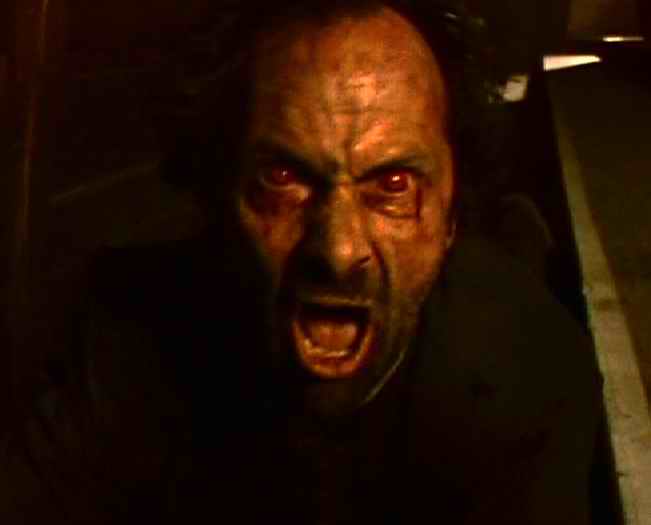Danny Boyle’s 28 Days Later as a New “Zombie Film”:
Through Encounters with “Inhuman” to Wars
against “Human”
Yukari Higuchi
Represented by
George A. Romero’s works, “zombie films” have established a subgenre in general
horror films. Danny Boyle’s 28 Days Later
(UK 2002; US 2003) is also classified as a “zombie film,” containing the
conventional concept that “dead bodies can return to life” (Schneider 182). As “zombie
films” released around 2002 are described as “a new mutation” by Benson-Allott
(66), 28 Days Later, however, revitalizes
its genre and merges with other genres by employing conspicuous elements of the
monsters, characters, and especially the plot.
Although the
monsters of 28 Days Later can be
recognized as zombies, who have dark skin, moan in a low voice, and are
infective; they are exceedingly different from traditional “shuffling corpses;
they have become runners, in some cases blessed with almost superhuman agility”
(Benson-Allott 66). They are not only “inhuman” but also “superhuman,”
overwhelming both characters and viewers by their speed and sudden attacks like
creatures of survival horror videogames. Encounters with the zombies
synchronize with experiences in dungeons of videogames; for example, when Jim
(Cillian Murphy) explores the church, we become not so much “audiences” as
“players” by enjoying the monster’s appearance from his point of view shots. The
protagonist acts on behalf of viewers as well as that of videogames.
However, such a substitutive role of Jim
is disrupted at the climax of the film, when he disappears to the offscreen. At
the sequence of his escape from and vengeance on the military, the film itself,
or its genre, also deviates from a regular “zombie film.” Kawin points out that
horror films have oppositions between “Inhuman versus Human” (7); on the
contrary, 28 Days Later turns out to
be a film embedding a confrontation, that is, “Human versus Human.” Antagonists
in the film are changed from “inhuman” with “human” according to the plot
development: zombies are introduced as menace to Jim at first, and finally they
are employed by the protagonist in order to defeat “human.” The structure of
“Human versus Human” can be considered as a characteristic of “war films;” nevertheless,
this film remains as a horror film. The reason is that Jim alternately assumes
the character of “inhuman” when he fights against “human,” resorting to brutal
means such as releasing the zombie, gouging out a man’s eyes, and accomplishing
all of them without hesitation. Therefore, the film retains the binary
opposition “Inhuman (Jim) versus Human (the military),” that is a trope of
horror movies, throughout the whole plot.
In the
context of “Human versus Human,” the film refers to “communication” and the
lack of it as a theme; in other words, the contest between "humans" is
represented as “an exchange of languages” (Kawin 8). The characters, especially
the protagonist, repeatedly say “Hello.” to someone who is supposed to be
there. At the very end of the film, the survivors make a huge cloth banner sign
of not “HELP” but “HELLO.” Jim is finally given response to his “Hello,” and
that signifies his regain of humanity.
Works Cited
Benson-Allott,
Caetlin. “Distributing the Dead: Video Spectatorship in the Movies of George A.
Romero.” Killer Tapes and Shattered
Screens: Video Spectatorship from VHS to File Sharing. Barkeley: University
of California Press, 2013.
Kawin,
Bruce. “The Mummy’s Pool.” Planks of
Reason. Barry Keith Grant and Christopher Sharrett, Eds. Scarecrow Press,
2004. 3-19.
Schneider,
Stephen. “Monster as (Uncanny) Metaphors: Freud, Lakoff, and the Representation
of Monstosity in Cinematic Horror.” Horror
Film Reader. Alain Silver and James Ursini, Eds. New York: Limelight
Editions, 2000. 167-192.



No comments:
Post a Comment